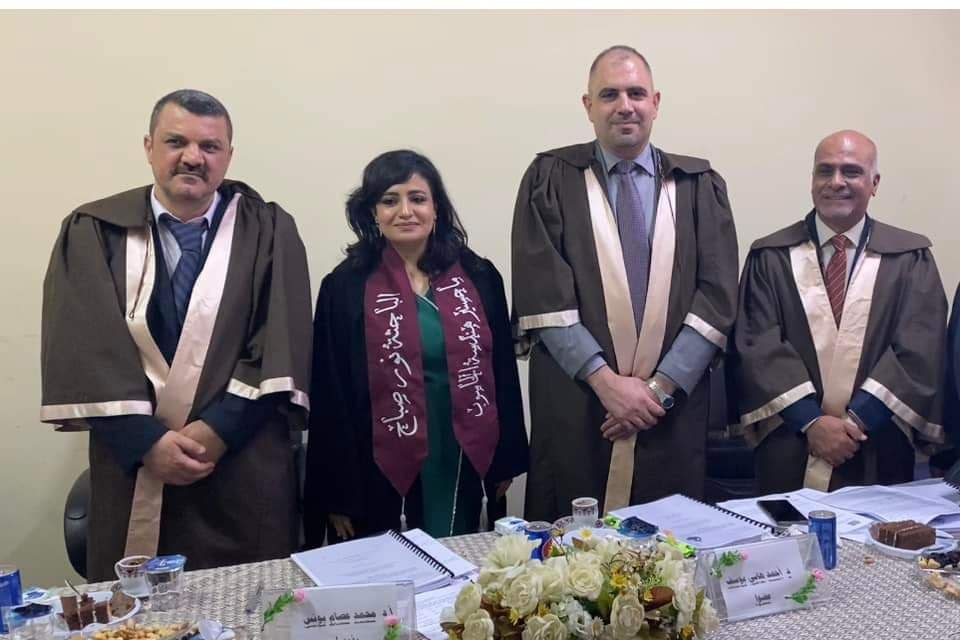Visitors: 5492047 Views
Done By: Department of Computer Engineering
Post Date: 2023-03-15
Last Browse: 2024-05-08

Praise be to God, master’s student Nour Sabah Abbas Mutlaq’s defense of her master’s thesis entitled DESIGN AND IMPLEMENTATION OF AN AUTOMATED IRRIGATION NODE BASED ON A MACHINE LEARNING ALGORITHM On Wednesday, 3/15/2023, the committee consisted of: Mr. Dr. Muhammad Essam Younis (Chairman) A.M.D. Anas Latif (Member) M.D. Ahmed Hani Youssef (Member) Under the supervision of A.M. Muhammad Sabry Salem, and the thesis was scientifically evaluated by A.M.D. Ahmed Fayeq and A.M.D. Ammar Daoud and linguistically by Dr. Raslan Saad Abdel Rahman The student has passed the requirements for obtaining a master’s degree The content of the message is: (Recent improvements in artificial intelligence and sensor technology have made it possible to monitor and control our environment. Through evaporation and drainage, the current agricultural irrigation system uses too much water. Also, traditional agricultural irrigation can result in too much or too little irrigation, reducing the quality of crops And production.Since irrigation scheduling is highly dependent on soil moisture, soil properties, weather conditions and plant type, an automatic irrigation and monitoring system that takes these factors into account should have a positive impact on water saving, increasing crop yield and improving crop quality.This thesis proposes a new approach based on On artificial neural networks (ANNs) to monitor agricultural conditions and control soil moisture to determine irrigation water ratios at pre-defined time intervals in a wide range of operating parameters. The artificial neural networks were created using experimental data. The neural network was trained using irrigation ratios (IAM) as a parameter. desired, soil moisture, soil type, plant type and time interval as input parameters.In the network, back learning algorithms were used to find the best method. Four formulas were derived to predict irrigation rates and timing for a wide range of plants (for soil moisture of 21-70 kPa) using network weights. These formulas were used to program the automatic sensor and control device (ASCD). The ASCD is a custom design that can communicate with two types of sensors to determine how wet the soil is and interact with three different types of electronic valves. In addition to the ability to operate a node within a wireless sensor network. Application of the new predictive formulas revealed two important results. The first is to reduce the amount of water used to irrigate crops during the day versus at night. Secondly, it reduced the amount of energy needed to operate the irrigation system by 16.6%. The new predictive formulas showed high accuracy when compared to a number of researchers' results. Average absolute relative deviation (AAPD) of the predictive model and Karasekreter N. et al. (2012), as well as the correlations for the full set of experimental data, are 5.46% and 21.79%, respectively. Considering that agricultural irrigation uses 69% of the world's total water, the 16.66% water saving resulting from using the proposed predictive formulas shows that there is a lot of potential to save water in the world. .